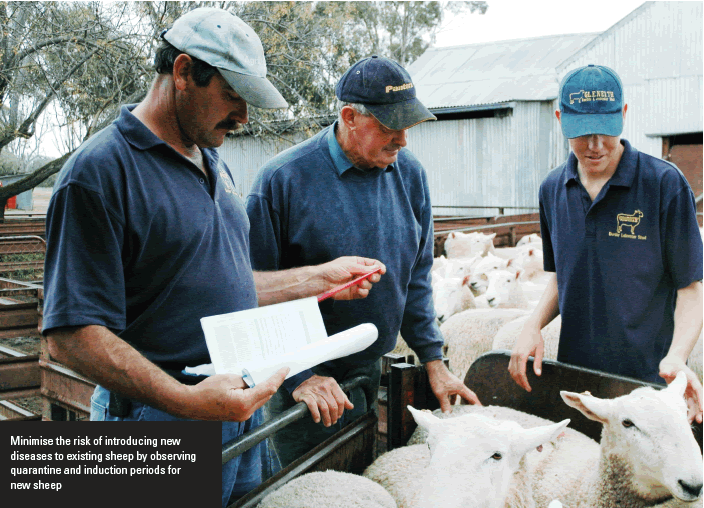 |
 |
Avoiding disease introduction is more cost effective than treatment
|
 |
Keep footrot, lice and OJD out of your sheep flock
|
 |
When disease is detected, take action to minimise its impact |
|
 |
Key decisions, critical actions and benchmarks
Assess the current disease status of your flock
Some important pests and diseases to be avoided include:
- Footrot
- Lice
- Ovine Johnes Disease (OJD)
- Drench resistance (discussed in procedure 11.2).
Be able to recognise important diseases (see tool 11.13) and avoid their introduction.
Potential sources of disease
Ask for a signed National Sheep Health Statement concerning disease history, to assess the risk of disease when introducing new sheep into a flock. Visit http://www.farmbiosecurity.com.au/toolkit/declarations-and-statements/ to download a copy of a National Sheep Health Statement template.
Sheep producers should provide a signed National Vendor Declaration (NVD) for all sheep or lambs they offer for sale or slaughter, and insist on a correctly completed copy when buying sheep or lambs. A signed NVD declares that the owner of the sheep has met the basic on-farm food safety requirements of the Livestock Production Assurance (LPA) program (see procedure 3.2 in Market Focused Lamb and Sheepmeat Production).
Complete a risk assessment of your boundary fences and policy for new stock introductions, transport and people (see tool 11.14) to identify potential disease risks for your farm.
Quarantine new sheep on arrival
Purchasing stock is a normal part of management on some farms. To minimise the risk of introducing disease, observe quarantine and induction periods during which existing sheep are not exposed to new sheep (see tool 11.15).
Control and eradicate existing diseases
Control and eradicate introduced diseases such as footrot and lice (see tool 11.16).

|